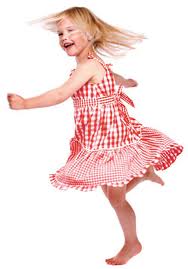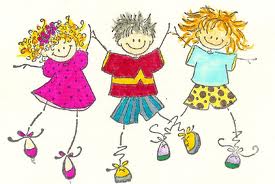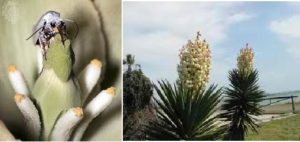
Pat Kellogg Roller, Children’s Science Specialist/Teacher/Retired
INTRODUCTION/OVERVIEW
KID’S SURVIVAL TRAINING! WHY?
Part 1 – Until recently, I had never heard of a Cyclone Windstorm. A few days ago, my first happened here with winds up to 69 mph! We watched a semi-truck blow over, fences, trees, went down. We couldn’t stand up without holding onto something. 1000 people, at least that, appear to be dead on Africa’s east coast? And that is this week’s news. Violent weather events are happening daily. Five states are, right now, flooded.
May 20, 2013, an F-5 tornado struck Moore, Oklahoma, killing 24 people, 10 of them children.350 people were injured. and 2 elementary schools were completely destroyed, while school was in session. Heroic teachers saved most of them, and today tornado shelters are being built in every school in our city. On that day, 12,000 homes were severely damaged. This happened less than 10 miles from my home.
Where homes had been, piles of water and mud-soaked debris from 4 to 10 feet high littered the landscape as far as the eye could see. All utilities were off, roads covered with debris, phones not working, and survivors needed immediate assistance! DANGER LURKED IN THE DEBRIS! People were trapped in the debris!
Part II – Sudden Changes – Immediate Adaptations Needed
TETANUS – The immediate danger was tetanus. Tetanus spores live in dirt and enter humans through an opening in the skin. Inside, spores grow into bacteria which attack the nerves causing damage such as lockjaw. Immediate tetanus vaccinations were needed for all handling the debris. Everyone needed to wear gloves.
MOSQUITOES – It’s warm and in 4-6 days mosquitoes begin to breed in standing water under excellent cover – the debris. Mosquitoes pick up West Nile Virus when they bite carrier birds and pass it on to humans when they bite them. This disease may be deadly to humans.
RODENTS AND SNAKES – Lots of human food is mixed in with the debris. Mice and rats come for the food, snakes come for the mice and rats, mosquitoes come for all. And there you have a dangerous FOOD CHAIN.
Can children be taught under good conditions, coping skills for bad conditions such as disasters? I believe we can build resilient children. In her book , “Option B” Sheryl Sandburg wrote: “We all want to raise resilient kids so they can overcome obstacles big and small. Resilience leads to greater happiness, more success, and better health. We can start by helping children develop 4 core beliefs: they have some control over their lives; they can learn from failure; they matter as human beings; they have real strengths they can RELY on and SHARE.”
Yes they can; and in the process they can have lots of fun as well as make good memories. Learning how our wonderful, amazing planet works is a great starting place. And this website can help a lot with that.
Part III – Get Ready – Use “Kid’s Ecology” SPICE Tool Kit.
SPICE is an acronym. Each letter stands for two important concepts necessary for living organisms to survive in nature. We are living organisms. This easy, fun “Kid’s Ecology” is learned during exciting “SPICE ADVENTURE WALKS” wherever you walk! Whether you walk in different environments or take the same daily walk, once you learn what to look for, you will find it anytime, anywhere, INDOORS and OUTDOORS.
When you use the SPICE concepts as you walk and talk, your children will learn through observation and interaction how to cope with any disaster. When you are caught in a disaster, your trigger will be, “Remember our SPICE walks, let’s see what we can learn here.” This helps to calm the children.
All earth events, even disasters, can help us learn more about how our planet works!
Part IV – Easily Adapted Spice Tool Kit Model (at the seashore.)
As an introduction to “SPICE” Children’s Ecology, I will use excerpts from my book, “PINK HAT’S ADVENTURE WITH SEAGULLS, HATS AND DANCING FEET.” Look on Home Page under BOOKS – it’s a free eBook.
“SPICE” is an acronym which stands for five simple but very BIG ideas. Don’t let the big words scare you. They are really simple to understand and use. Let’s read a bit from the book.


“Pink Hat,” I know you love having adventures more than anything but did you know that I have a great adventure every time I take a walk?”
“How do you do that? A walk is just a way to get exercise,” said Pink Hat.
“I take SPICE with me. SPICE helps me see so much more,” replied Nanny Pat.
“What’s SPICE? Show me what you mean,” said Pink Hat.
“Nanny said, “SPICE is a short way to remember five simple but very BIG ideas. These ideas help us to understand how our planet works.
The first letter (S) stands for VARIETY AND SIMILARITY. That means our earth has many examples of likenesses and differences. As I walk, I look at ways things in nature are alike and ways they are different. On every walk I see things I had not seen before.”
Nanny continued, “See those curlews, sandpipers and seagulls at the shoreline? They are all birds. They all need to eat to live. But each one is different than the other. Just look at their beaks. They all have beaks but each is different. Each beak was designed to help that bird get food. Watch the seagulls. See, they are grabbing the tiny, shelled animals brought in by the ocean water. They have to hurry because these little creatures burrow into the sand very quickly to hide. They want to go back to sea. They do not want to be eaten.” Sometimes we have to hide too in order to be safe during a disaster.
“I know you were upset about the seagull’s bad manners earlier,” said Nanny. Seagulls have not always had such bad manners. It began when people cleaned the fish they had caught and threw the parts they did not want away. The seagulls fought over this FREE food. It became worse as people left “junk food” on the beach. After a time, the seagulls did not want to work to get their food. They wanted FREE food. They fought over it. This is why seagulls act as they do. Notice the seagulls feeding at the shoreline, are WORKING for their food and they are not acting up.”
Pink Hat smiled. She wiggled just a little to show her pleasure. “You know Nanny, if I am lucky, I just might have those nice, hardworking, seagulls in our “Seagull Dance Class” tomorrow!”
Nanny laughed. “Yes, Pink Hat, that would be great. Now, let’s get on with your lesson. The (P) in SPICE stands for PATTERNS. That is an easy one to find here on the beach. Look at the ripples in places where the ocean water moves slowly. Look at the ripples in the sand. The wind and the water helped make those beautiful patterns.”
“Nanny,” said Pink Hat, Let’s go collect some seashells.” And off they went. After cleaning them, they began to group them by color, by shape, by size, by texture, and then Pink Hat said, “Look, I grouped mine by patterns on the back of the shells. That’s my favorite way to group them.” As she worked, she was quiet, she was busy, she was seeing earth’s creatures in a new way.
As they moved on down the beach Nanny stopped. “This is the perfect place for the (I) in SPICE. The (I) stands for INTERACTION AND INTERDEPENDENCE.
The sand dunes are hills of sand which keep the ocean water from wearing away the beach sand. Notice there are plants growing there. The sand provides the minerals the plants need. Rain provides the water. We give off carbon dioxide to them, they give us oxygen in return, and with these things and the help of sunlight, green plants make food for all of us. The plants hold the sand in place. And, green plants are the only living things that can MAKE FOOD. So, you see, we are all dependent on them for food and for oxygen to breathe. They help cool the earth as well. INTERACTION AND INTERDEPENDENCE are at work here

“See those beautiful shrubs up ahead. They have bell-shaped white flowers. The flowers have nectar, food for the yucca moth. The yucca moth sticks its long mouth down to get the nectar and in doing so some of the pollen sticks to its body. As it goes from flower to flower some of the pollen falls off in the flower and some more sticks to the moth. In this way the yucca plant is pollinated so it can make seeds to make more yucca plants. Meanwhile, the yucca moth lays its eggs inside the flowers where they are safe until they hatch and begin to feed on the nectar and the flower. So, there you have INTERACTION AND INTERDEPENDENCE. It is said that the only insect that pollinates the yucca plant is the yucca moth!”
“Wow,” said Pink Hat, “I love that plan. This is such fun! What’s the next letter?”
“The next letter in SPICE is (C) which stands for CHANGE. Signs of change are everywhere because every living and non-living thing on earth is always changing. Wind, water, and sunlight bring changes to earth. In places where there are four seasons: summer, fall, winter, spring, the changes of the seasons bring changes that are very easy to see. In SPICE, the “C” also stands for CONTINUITY. Continuity means a “connected whole.” We need to do all we can to help our Planet Earth CONTINUE these life processes, which help keep our planet green and healthy. Many people think us humans have caused dangerous changes in the way our Planet Earth works.”
“Is that why everyone is talking about saving energy and “going green?” said Pink Hat.
“Yes, Pink Hat,” said Nanny, our planet is in trouble and it needs all of us to help.”
“I want to help. What do I do?” said Pink Hat.”There’s a Hat’s Convention in town working on ways to help. We can go there after lunch. Now the last letter (E) stands for ADAPTATION AND EVOLUTION. Remember the butterflies and the yucca moth. Both have special mouths which are adapted to reach way down deep inside the flower like a soda straw. These mouths are adaptations to help them get food. The snowshoe hare is a rodent that lives in the mountains where there is lots of snow. In winter, its fur turns white like the snow. This helps it to hide. In the spring its’ fur turns brown to blend in with its summer home. This ADAPTATION helps it to survive and over a long period of time when the baby hares all do the same thing we say that EVOLUTION has happened.”
“Hey Pink Hat, look at all those little fish swimming together in a large group. Have you ever wondered why they don’t bump into each other? Staying in a large group is how they survive. The groups are called “schools.” I guess you could say they learned to do this by “schooling”. Nanny Pat laughed. Human kids today learn school rules which they are supposed to follow.” Pink Hat laughed.
“Nanny Pat,” said Pink Hat, “Sometimes you are silly. It must be time for you to eat lunch. Let’s go meet Poppy at the Seafood Shack.” And off they went finishing up their “great adventure” SPICE walk.
The book has more adventures you are sure to enjoy. It has more than 60 well-illustrated pages. It is easy to read, because there are so many pictures which teach. In the front is another SPICE model for taking a great SPICE Adventure Walk in a park, and at a County Fair. This is to help adults see how easy it is to adapt the learning wherever you are. This book is for folks ages 4-104
If you liked this little bit from my book, then treat yourself and your kids to a great deal of fun reading this free eBook, “Pink Hat’s Adventures with Seagulls, Hats, and Dancing Feet.”In this book, the teaching and learning are great, but the music and dancing feet fills us with JOY.